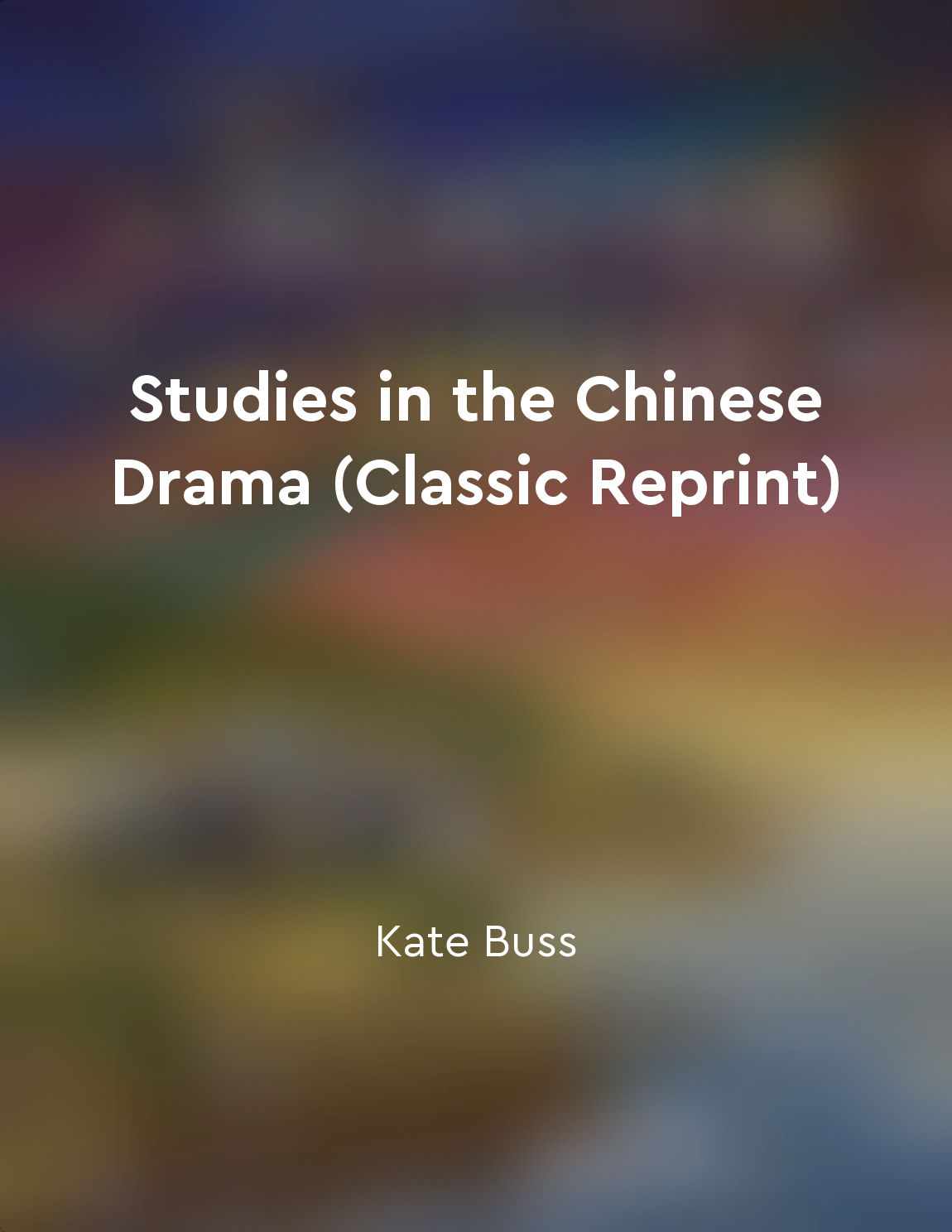System of gestures and postures from "summary" of Studies in the Chinese Drama (Classic Reprint) by Kate Buss
The use of gestures and postures in theatre has been studied for centuries, providing insight into the way communication is interpreted by an audience. These techniques are used to portray a certain emotion or story without the use of words.- The use of symbolic gestures and postures enhances context and meaning in classical Chinese theatre, allowing audience members to comprehend unspoken connections between ideas, place and characters.
- Through careful use of body language, theatre-goers get to experience deep immersions in ancient Chinese dramas.
- In Chinese theatre, body movements are extremely important when it comes to conveying emotion and message. Gestures and postures play a significant role in communicating between the performers and the audience.
- Actors on the traditional Chinese stage differentiate themselves through gestures and postures that express different states of mind, such as intimidation or aggression, peace and sorrow.
- In addition to expressing emotions, body language is used to link characters, linking the past, present and future which would allow members of the audience to recognise relationships.
- To increase the dramatic effect of a scene on stage, each character often makes precise and meaningful hand and arm movements along with articulations of body parts.
- There is an intricate system of positions and motions incorporated into drooping of the shoulders, lowering of the eyes, pointing of the fingers, wave-like movements of arms and other such indications which are integrated within traditional Chinese Drama.
- Ancient plays have a unique set of postures which gives actors authority over their own characters, enabling them to create a certain atmosphere.
- Some postures also convey complex religious or spiritual messages too. A depiction of faith, respect and veneration can be reflected in distinct postures.
- Chinese theatrical culture uses certain physical movements so extensively, they become associated with particular stories, settings and moods - helping form a universal language.


